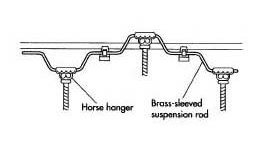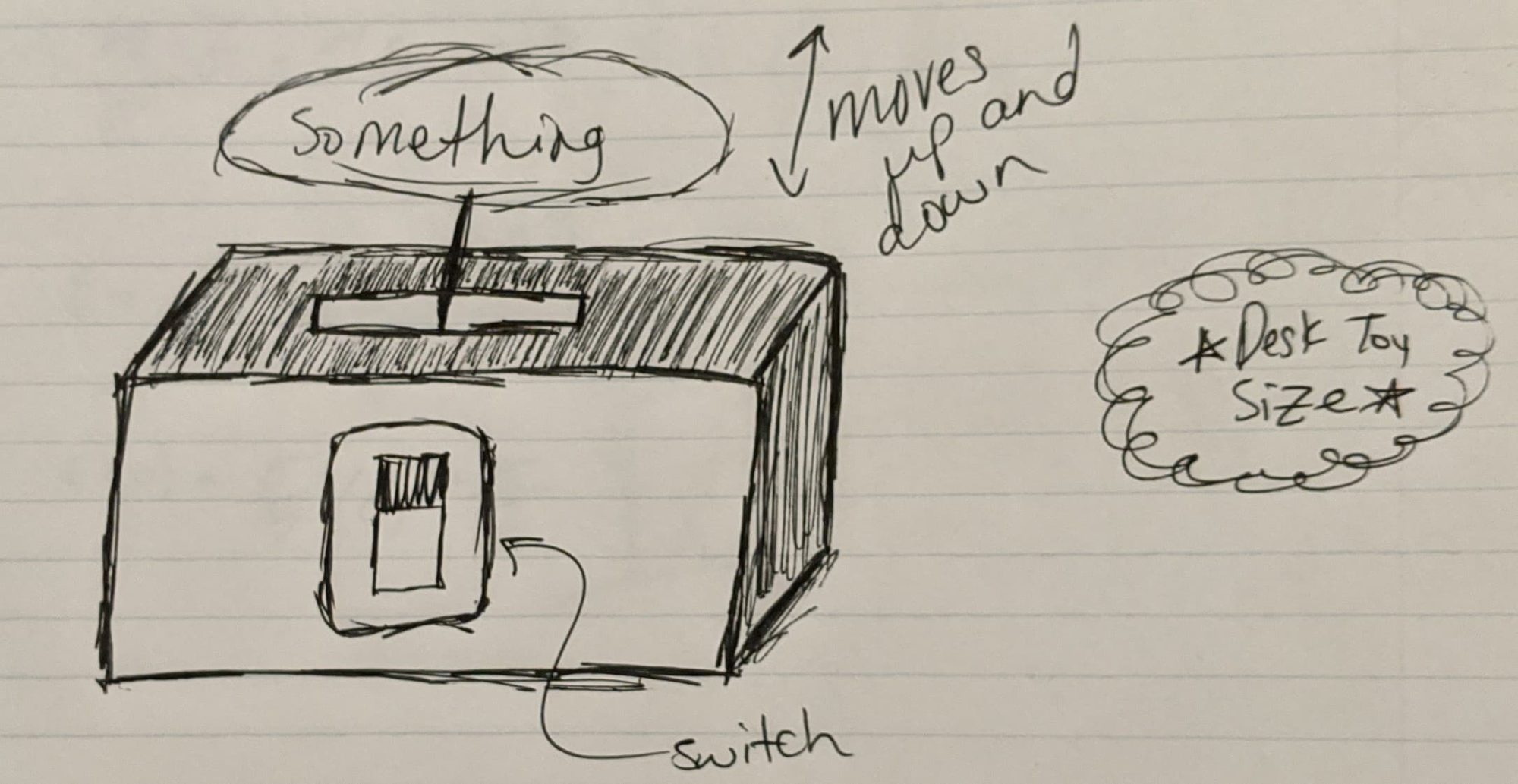As with any project, there are always constraints that need to be considered in order to create a completed product and achieve the desired vision. Listed below, in no particular order, are the top five constraints that came to mind when considering the next phases of my desk toy project.
1) Shape/Size
I aim to create a project that would make a good desk toy or general house decoration. Because of the setting that I wish for my product to exist in, I need to keep the size and shape within a certain range. It wouldn’t be a very good desk toy if it was two feet wide, or seven feet tall. And it wouldn’t make a very good house decoration if it couldn’t easily be placed on a shelf or on a table. However, I know that I also need to consider the electronics that are necessary to achieve the functional requirements of this project. This means that there is an inherent minimum size that must be accounted for so that the circuit board, motor, and batteries can all be housed within the acrylic box. The balance between these two needs will be vital to achieving my vision and creating a product that actually works.
2) Skill Level
Many of the methods of manufacturing that I plan to use are methods that I have limited experience with, or only theoretical knowledge on. While I have taken the intro to laser cutting class through the ITLL, I haven’t actually laser cut anything. This means that I will need to ask for help, either from ITLL staff or from classmates. As for the trinket, if I decide to 3D print something, I will need to brush up on those skills as I haven’t 3D printed anything in a few years. For the electronics, I have no real experience with programming an Arduino, and very little experience with soldering circuit components together. Overall, this could prove to be the biggest hurdle, and I need to make sure I plan ahead and give myself plenty of time and resources in case I make mistakes or need assistance.
3) Available Materials
Even though I have a (mostly) complete idea of what I want me project to look like, there are still many questions left to answer in terms of materials. Do I want to use acrylic or wood for the box? Do I want to laser cut or 3D print the trinket? Where do I find these materials, once I’ve decided on them? And most importantly, how much will it cost me? A lot of research will probably have to go into this constraint to make sure I have enough information to make an informed decision.
4) Balancing the Trinket
One of my biggest concerns, and therefore one of my biggest constraints, is how I will keep the trinket balanced on top of the motor. The motor configuration that I envision using is similar to that used on a merry-go-round to make the seat move up and down. Generally this is achieved by having a bent section of pipe spinning on the motor, so that the seat moves up and down as the motor spins in one direction. An example of this kind of setup can be seen in the picture provided below. This alleviates the need for a double-direction motor and the related controls, but also means that the motor will require a significant stopping force to keep the weight of the trinket from forcing the motor into the lowest position whenever it is turned off. It will also pose a problem in keeping the trinket at 90 degrees. If it isn’t supported correctly, it could start to lean off axis and could eventually break.

Image Source: http://www.madehow.com/Volume-4/Carousel.html
5) Aesthetic
Of course, you can’t have a project without considering the aesthetic that you’re trying to achieve. For me, this aesthetic is “minimalist” for the box, but also “fandom” for the trinket. While both seem relatively easy to maintain, it is still something that I need to keep in mind. The minimalist aesthetic for the box mainly means that there won’t be any decorative embellishments or intricate designs. It’ll be a box: six sides, one color, a switch and a hole for the trinket. That’s it. Pretty simple thing to go for. For the trinket, it mostly matters that I choose something that I feel connected to. It doesn’t have to be so blatantly obvious that anyone could get what it’s from, but it also probably shouldn’t be so convoluted that no one understands without me explaining it. Some fandoms that I am currently going between include My Chemical Romance, Good Omens, space in general (since I’m going to be working for an aerospace company after graduation it might be nice to have something related to that), Lord of the Rings, among others.


4 Comments. Leave new
Hi, Mary,
I really like your idea that you are making a desk toy that you can play with in your everyday life! It sounds super functional and fun! Depending on how you want to construct the enclosure for the toy. MakerCase, https://www.makercase.com/#/, might be a handy tool if you are laser cutting out the enclosure. It gives you box templates that can further edit in illustrator to meet your need. Personally, I don’t recommend laser cutting out acrylic or just any material for the final enclosure that you are going to put your electronic components and everything in, simply because it smells pretty strong. (And, also, it’s a pain to assemble the pieces together to make it stable. I did a project at one point using MakerCase as a template for a box design, and we had to super-clue the lasercut pieces together…)It might be better if you were to go with 3D printing, which doesn’t quite have any odor and may last longer on your desktop. But back to lasercut, it’s still a great way of prototyping and to figure out dimensions. I recommend starting to prototype as soon as possible just so you gradually have a better sense on how big the product will be and how much space the final enclosure need to reserve in order to fit everything together.
Good luck to your project!
Best,
Xiang
Hi Xiang! I’ve actually been looking at that website over the last few days to get an idea for size/shape of my box! Originally I thought about trying to make my own CAD models from scratch but that just becomes so time consuming, especially when a resource like this already exists.
I’ve never laser cut before, so thanks for the warning on the smell and possibly having to glue the pieces together. I’ll be sure to budget extra time in in case the laser cut box doesn’t end up as sturdy as I would like.
Mary,
I think you’ll be able to pick up arduino quicker than you think. And if not feel free to enlist my help haha. As for your balancing constraint, maybe explore some counterweights? On that picture, there are 3 hangers, but if you only had two of those, and both of them had equal weights on them, they would cancel each-others forces out and the motor would only have to overcome momentum. Additionally, if you made the weights hanging, you could use that to keep your trinket upright. Good luck with the project!
Having two pieces to cancel out the weight is a really good idea, and actually lends itself really well to the different ideas I had for possible trinkets!